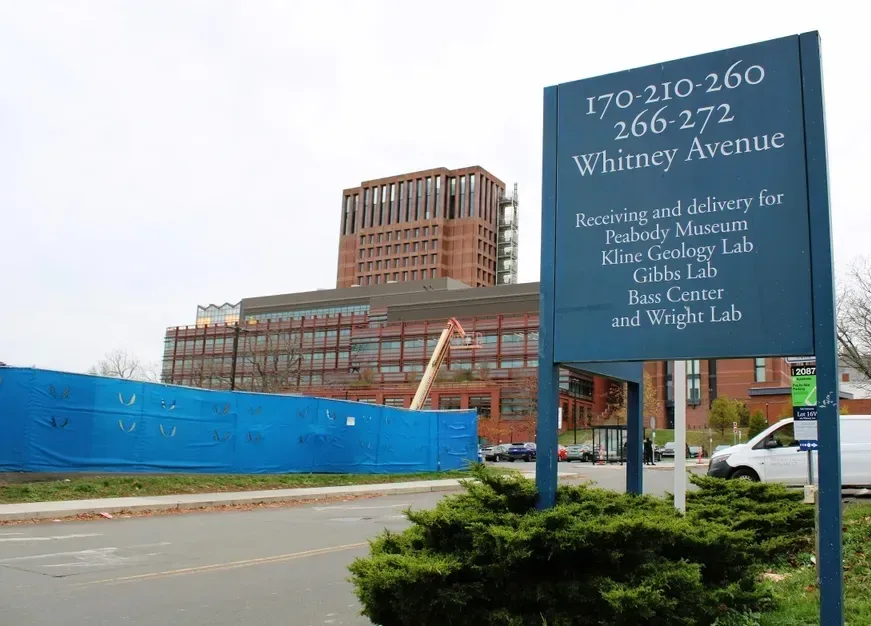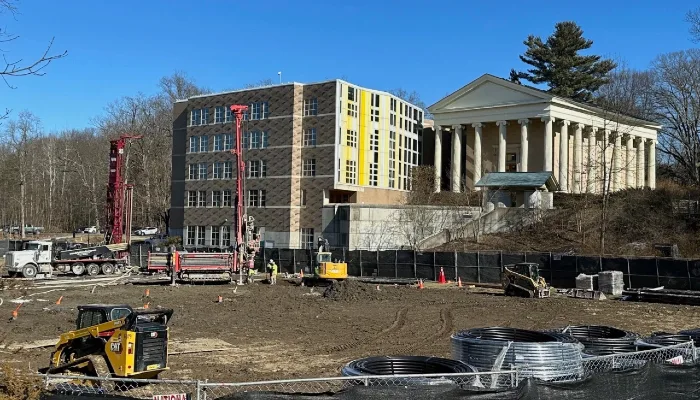In a bold step towards sustainability, universities nationwide are redefining their energy strategies by embracing geothermal power. This shift not only aligns with environmental goals but also heralds a return to one of the most ancient forms of energy harnessed by civilizations such as the Romans, Native Americans, and ancient Chinese.
Bard College Leads The Ivys with Geothermal Project
At the forefront of this movement is Bard College, nestled in New York’s Hudson Valley, which has taken significant strides by initiating a state-of-the-art geothermal heating and cooling project for its Charles P. Stevenson Jr. Library. This venture marks a departure from its decaying oil-based system towards a more sustainable future.
“It is one of many colleges utilizing ground geothermal source technology that installs pumps in the ground that then circulates a temperature-adjusted fluid to the surface using a series of pipes in a closed-loop system,” the school announced, underscoring the project’s innovative approach to sustainable energy.
Caitlin Grady, an assistant professor at George Washington University, lauds geothermal energy as a prime example of leveraging natural resources for power. “You’re talking about using gravity and water to power buildings… using what the Earth has to offer for free,” Grady explained, highlighting the efficiency and environmental benefits of this renewable energy source.
Bard’s Efforts For Sustainability
Bard’s ambitious project involves drilling 50 boreholes, each 500 feet deep, to house the geothermal loops and thermally enhanced grout, a testament to the college’s commitment to cutting-edge and eco-friendly solutions. “Our default is now geothermal,” said Mark Primoff, associate vice president of communications for Bard College, emphasizing the institution’s shift towards sustainable energy practices.
Dave Hermantin, senior vice president of Brightcore Energy’s geothermal division, pointed out the urgency of replacing the old oil system due to its “end of useful life,” highlighting the need for a “quick fix” that also aligns with environmental sustainability goals.
For every unit of electricity used 4 units of energy comes from the ground as renewable heat, making geothermal systems up to 50% more efficient than conventional air conditioning.
In the winter, the heat pump boosts the warm ground temperature to heat the building.
In the summer, the system rejects heat to the cool ground.
The Quiet Revolution: Benefits Beyond the Surface
The transition to geothermal energy at Bard College is set to eliminate the building’s reliance on fossil fuels. “The new system will completely eliminate the building’s use of fossil fuels,” Hermantin affirmed, noting the significant reduction in carbon footprint this move represents. Previously, the library consumed about 15,000 gallons of oil annually, a figure that will drop to zero with the new geothermal system.
“Oil is one of the most carbon-intensive sources we have,” Grady remarked, “So moving from oil to geothermal is a huge savings in greenhouse gas reduction.” This transition not only benefits the environment but also ensures a quieter, more serene campus environment, devoid of the noisy exhaust from the old oil system.
Bard’s Vision for Carbon Neutrality
Bard College’s commitment to sustainability is further demonstrated by its goal to achieve carbon neutrality by 2035. With about 40% of its campus already utilizing geothermal energy, Bard is on a promising path to meeting this ambitious target. “We’re in great shape to meeting that goal,” Primoff confidently stated.
With the geothermal system at Bard costing $1 million to construct and expected to save $60,000 annually in oil costs, the investment proves the financial viability of switching to renewable energy. “Seeing the passion that the Bard College community has for conservation and sustainability firsthand is so encouraging and admirable,” Mike Richter, president of Brightcore Energy, commented, reflecting on the project’s alignment with Bard’s sustainability and the beauty of its Hudson Valley campus.

Ivy Leagues Going Green With Geothermal
The movement towards geothermal energy is not confined to Bard College alone; it is a burgeoning trend among the Ivy League, where sustainability projects are setting the standard for universities worldwide and tossing some serious eco-publicity at their fundraising efforts.
Yale University, for instance, is undertaking an expansive project that underscores its commitment to sustainability. As it adds approximately half a million square feet to its physics, science, and engineering complex, Yale is simultaneously launching a geothermal initiative capable of powering around 2 million square feet of campus space. This project aims to replace the university’s existing steam infrastructure, demonstrating a significant shift towards more sustainable energy practices.
Brightcore Energy, a key player in the transition towards renewable energy sources on campuses, highlights the influential role of the Ivy League in setting a green precedent. “The Ivies, when they do something, everyone kind of listens in that space,” said Dave Hermantin, highlighting the impact of these institutions’ decisions on broader sustainability trends in higher education.

In addition to Yale, Columbia University, Princeton University, and Brown University are also embarking on geothermal projects. These initiatives not only showcase each university’s dedication to reducing its carbon footprint but also position them as leaders in the global movement towards environmental stewardship.
The Northeast, with its favorable geothermal conditions, is an ideal region for such undertakings. The average ground temperature here, ranging from 50 to 60 degrees Fahrenheit, enables geothermal systems to operate with up to three times more efficiency than air-sourced heat pumps. This geographical advantage is particularly beneficial for universities in the area, making geothermal energy a viable and effective solution for campus-wide sustainability efforts.
The commitment of Ivy League universities to geothermal technology underscores the potential for significant environmental impact. By replacing older, carbon-intensive energy systems with geothermal solutions, these institutions are not only contributing to a reduction in greenhouse gas emissions but are also paving the way for a future where renewable energy is the norm. Their efforts highlight the critical role of academia in addressing climate change and promoting sustainability on a global scale.
More To Discover
- Scientists Unlock Circular Recycling for One Of The Most Common Plastics
- Indonesia Celebrates Milestone with Southeast Asia’s Largest Floating Solar Power Facility for 50,000 Homes
- EPA Takes Action to Reduce Water Pollution from Meat Processing Facilities
- Solar Farms Are Killing Pollinators And Burning Bees Alive
With the Ivy League setting a sustainable example, the ripple effect is expected to encourage other schools to explore their decarbonization options. As Hermantin suggests, the work in this space is projected to continue for at least the next decade, indicating a long-term commitment to environmental sustainability and innovation within the higher education sector.
As universities continue to embrace geothermal energy, they not only pave the way for a more sustainable future but also inspire other institutions to consider the profound impact of renewable energy on achieving climate goals.






















